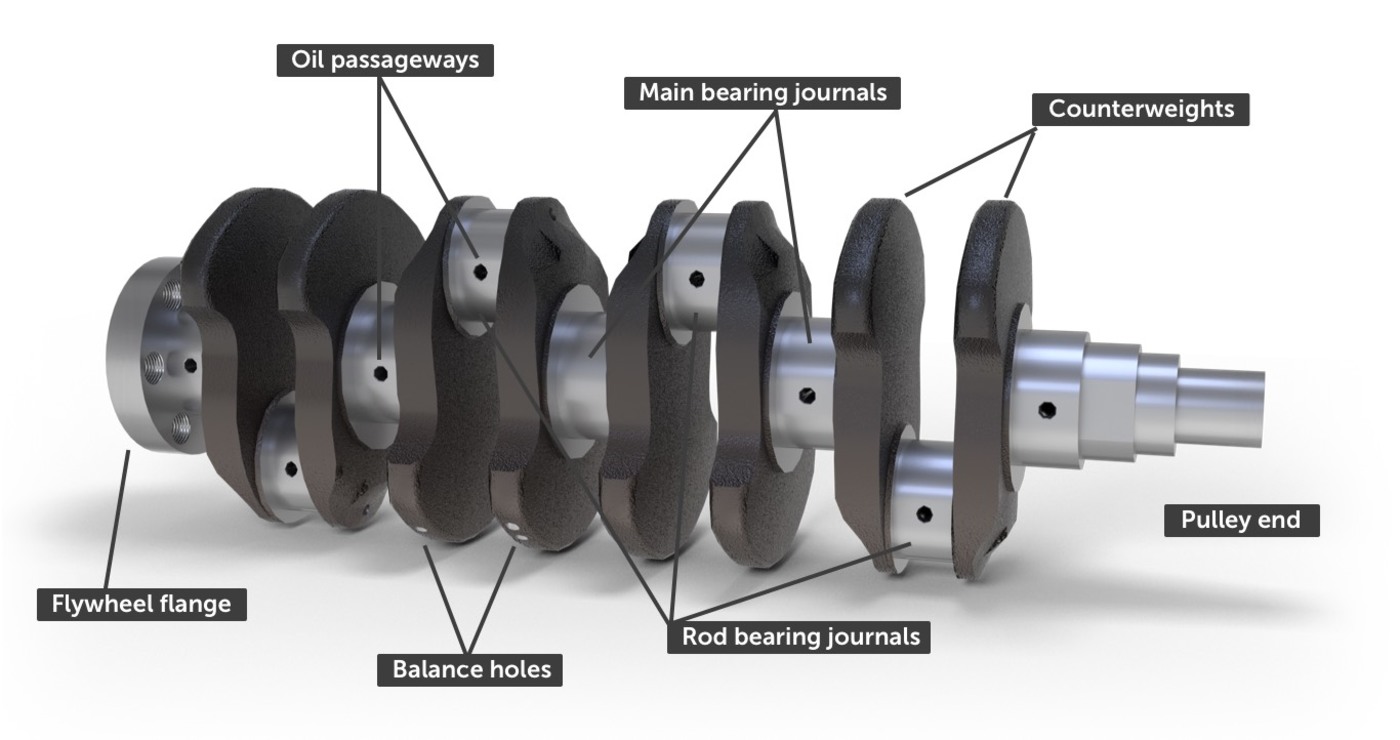Functions of a Crankshaft in an Engine
What is a crankshaft?
A crankshaft is a shaft with at least one crank, particularly the primary shaft of an inner ignition motor to which the interfacing rods are appended. The interfacing rod shakes back and forth as the crankshaft rotates.
The crankshaft is a fundamental piece of the motor in charge of converting reciprocating movements to rotational movements. In a basic dialect, it is a shaft with a progression of crank and crank pins, which are appended to the associating rod of the motor. These days, the substantial motors have
multi-cylinders and the crankshaft is important to drive the cylinders.

Image reference: www.howacarworks.com
Functions of the Crankshaft in an Engine:
This instrument is exceptionally important to give a smoother drive to the vast motors which have multi-cylinders. They are in charge of changing
the linear movement of the piston into the rotational motion. This explicit piece of the motor is made with the way toward producing the composite
of iron ore called steel.
While outwardly inspecting the crankshaft, you can discover the rod bearings are almost balanced or erratic. Here the balance of the shaft changes the responding movement (all over) of the piston in the rotating motion of the crankshaft.
Each motor is structured explicitly and so is the crankshaft. Its design differs with the size and number of cylinders in the motor.
Highlighting an example, in a four-stroke motor, the crankshaft will have four crank throws. These throws connect the four pistons and are
effectively associated with the flywheel of the motor.
While driving the motor or amid the ignition cycle the crank throw fills in as a lever arm, which pushes and pulls the cylinder. This significantly makes a progressive rotational movement in the motor.
The crankshaft causes the cylinder to complete its rotation and the throw will restore the piston at the highest point of the cylinder.
This item needs exceptionally smooth designing while in production regarding its weights and balancing. Such engineering is important to lessen the vibrations in the motor.
As such, vibrations can be extremely unsafe to the vehicle and can even prompt significant accidents.